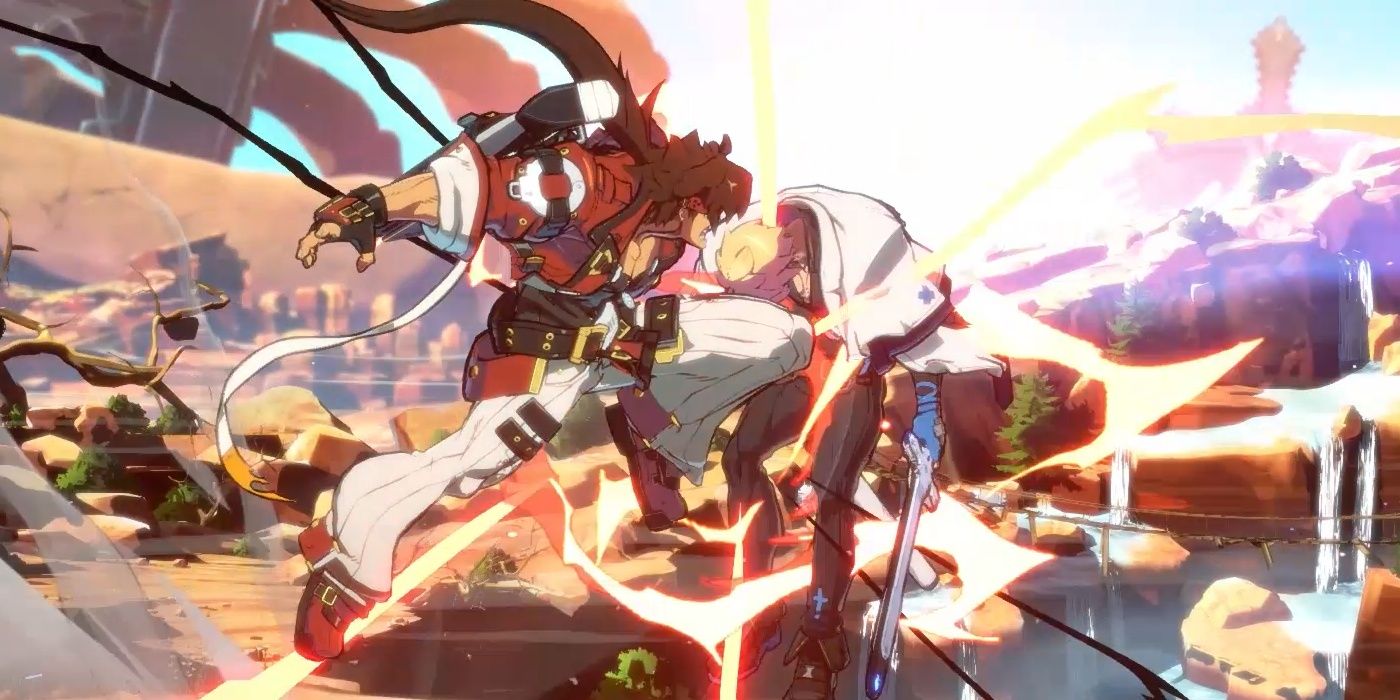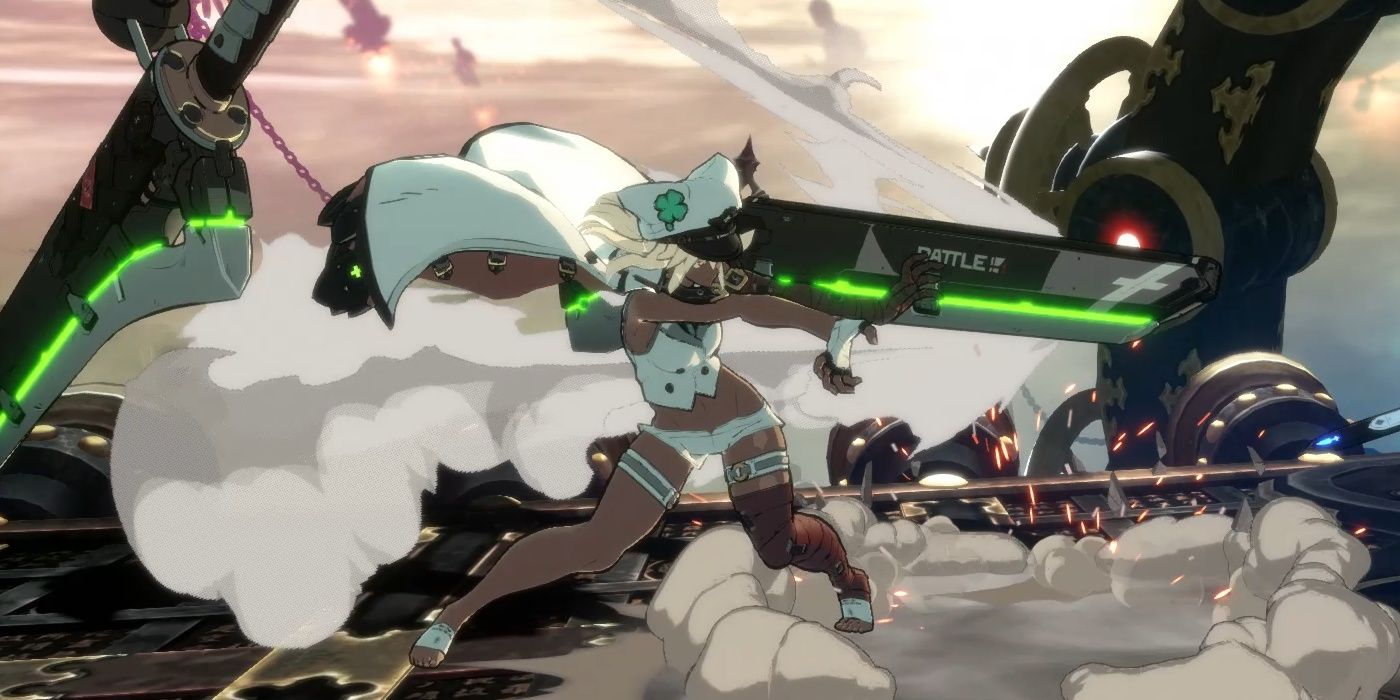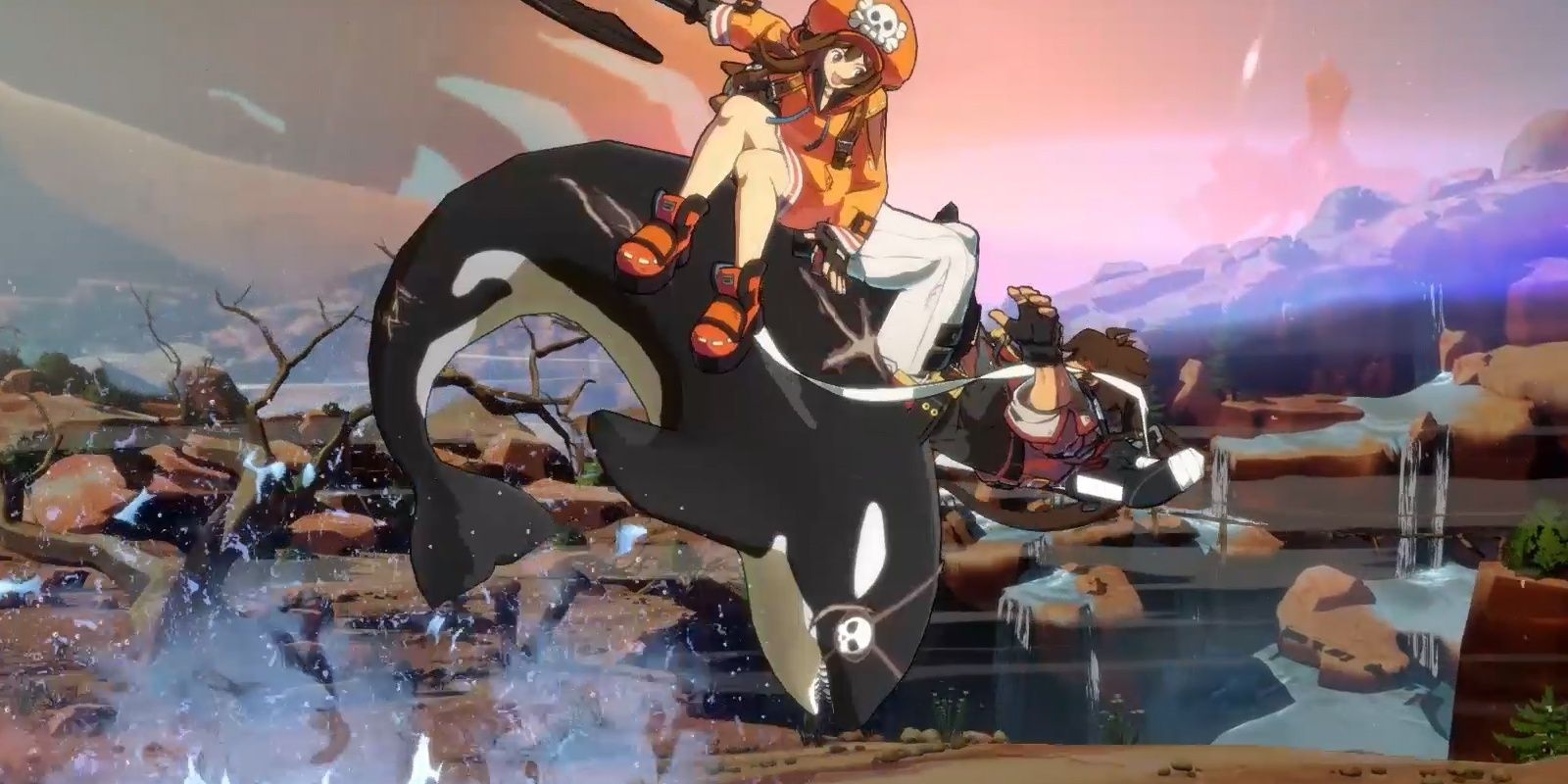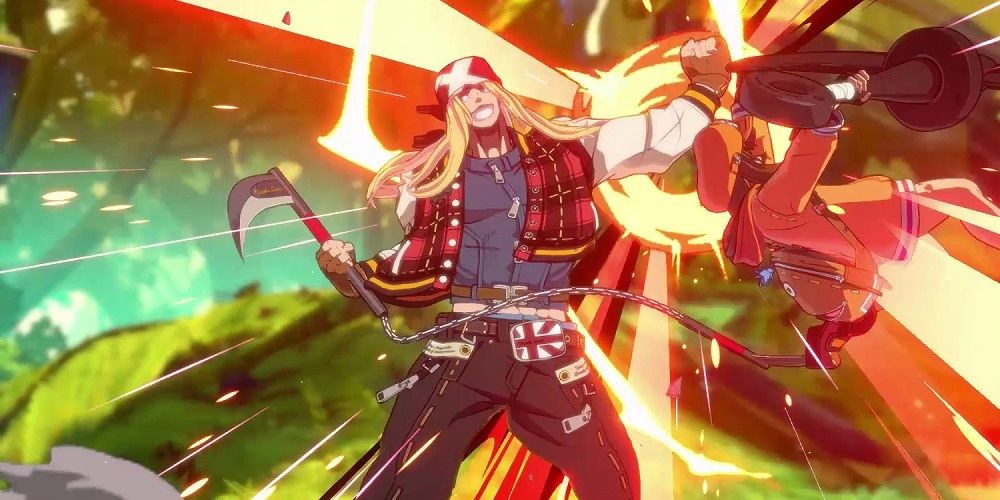Guilty Gear Strive is finally upon us, and if you haven't been playing the online beta tests, then you will be completely in the dark as to what this exciting game has in store. This is a fast-paced anime fighter, complete with speedy air dashes and complex mechanics that you won't be able to master overnight.
But if you've played Arc System Works fighters before, like Dragon Ball FighterZ, then you'll already have a good idea of what to expect, and how to make the most of the tools it offers you. Though even games like DBFZ and Guilty Gear Xrd were a bit easier to immediately jump into and start pressing effective buttons.
Guilty Gear Strive makes it easier to execute short combos that deal a hefty amount of damage, but more difficult to stretch those combos out, unless you know what you're doing. This guide will give you a quick introduction to how combos can be extended in GGST, so you can jump in and start extending those combos on day one.
Training, Tutorial, And Mission Mode
This is really obvious stuff, but the Training, Tutorial and Mission modes are all incredibly valuable. Training mode is great for training (duh) and practising your moves. Once you have a rough idea of how your combo paths flow, Training mode is where you get the evidence. You can, of course, use Training mode while waiting for online matches, making it an excellent way to wait and hone your skills.
If you are a fighting game beginner though, Training mode isn't going to help much. In that case, you need the Tutorial, and Strive still has a famously excellent Tutorial mode which will walk you through all of the basic mechanics of Guilty Gear, and general fighting games.
The Mission mode is a bit more advanced, and will teach you the more complicated mechanics of Guilty Gear. Early on you'll be doing basic stuff, like avoiding a projectile by jumping five times, but later on you'll be tackling tough combos with techniques that are difficult to pull off. Mastering the Mission mode will make you a much better player, though it's an uphill battle to get there.
Basic Links And Combos
GGST's combo system is similar to other traditional 2D fighting games, so intermediate players will need no explanation on how these work - but here's some info for beginners. In Training, VS, or Arcade mode, you can pause the game at any time to check the Command List, which will rattle off all of the unique moves your character has. Every character has Punch (P), Kick (K), Slash (S), Heavy Slash (HS), and Dust (D) buttons, each of which has a different effect when used on the ground, in the air, and when crouching. Learning what attack is performed with which button is essential.
Once you know your basic buttons, it's time to look at the Command List and start slowly moving through the list, using each attack at least once to understand what it does. One nice aspect of Guilty Gear Strive is that each move in the Command List gives you a short video clip of what that moves looks like in action, and a blurb about how it can be used, for example, as an anti-air, or an overhead.
GGST uses pretty traditional motion inputs for special attacks, like quarter-circle forward (QCF), charge motions, and traditional Dragon Punch (DP) inputs. For anyone coming to the game from the likes of Dragon Ball FighterZ, this will all be very familiar and easy enough to digest.
A common combo for a lot of the cast is to hit an opponent with S, and then follow up with a special attack - if your character has a special attack that also uses S, then you won't even need to worry about pressing a different button for your combo to work, and you'll notice the end to your S animation will be cancelled, allowing your special attack to hit faster, before the opponent can block. These are the basic foundations of most fighting game combos, and from here you can expand. Some special attacks can be followed up on after use to extend the combo, and this is where things start to become truly dynamic.
Jumps Cancels And Wall Breaks
This is where things begin to get interesting. First, certain moves will push back enemies after hit, and while in a tumbling animation, enemies can actually be struck again. An easy example of this is May's DP Kick command grab, which, on the surface, doesn't seem to have much of an advantage over a normal grab. However, when against the wall the pushback animation turns into a small wall bounce, allowing you to get in another hit, which can possibly convert into a full combo.
Sticking with May for a moment, May can jump cancel out of S when very close to the opponent, as a unique short-range version of the attack is performed. Using this she can convert DP K into S, jump cancel, and then an air combo, which can even lead into an Overdrive and a wall break, meaning what initially appears to be a standard grab can convert into huge damage, which your standard grab could never. All characters across that cast have these kinds of abilities and opportunities, they can just be difficult to find. The Mission mode will help you find some of these advanced quirks, but not all of them.
Wall breaks and sticks are also incredibly useful. Your foe will stick to the wall once given one too many slaps against it, giving you the opportunity to pull out even more slow to activate special attacks and super moves. Wall sticks will make your combos way longer - and also makes having your back against the wall way more terrifying.
Roman Cancels
The Roman Cancel is the final move you need to master in order to stretch out those combos to some truly terrifying lengths. A Roman Cancel is performed by pressing three of the four main attack buttons (P, K, S, HS) after you've used a move with a lot of ending lag - for example, a HS special move. This will cancel the end lag of that move, allowing you to continue attacking immediately without any delay. This essentially can turn any short combo into something much longer and more devastating.
In addition to cancelling the end lag of the move you've used, it also moves your character in one of the four cardinal direction, meaning you can move in on an opponent even if your attacks have been pushing you back, giving you more flexibility to use shorter-range attacks, which can often be performed rapidly. This can easily allow you to cancel your basic combo into yet another combo, ending with an Overdrive technique. Even if you only understand a handful of short combos with your chosen character, you can use the Roman Cancel to link two of those shorter combos together, and just be experimenting with this you'll quickly be able to find some lengthy and formidable combinations which can inflict massive damage on your opponent.
You want to focus on finding combos that do as much damage as possible while using as few of your resources. You will start each round with an empty Tension gauge, and this is refilled over time as you attack and take damage. Using a Roman Cancel or an Overdrive technique will use half of your overall Tension gauge, meaning you can potentially use it all up in a single combo - hazardous, as while you will probably build a full Tension gauge in every match, you can never be sure when it will be most effective. This requires a lot of patience to master, but once you've been able to intuit which combos do the most damage while using the least amount of Tension, you'll quickly learn when using Tension is most effective.
With all of the information above and the information within Guilty Gear Strive, you will be able to master the combo system and quickly begin extending those basic combos beyond what you will initially be able to perform. It is tougher to link a long combo in this game than in something like DBFZ or even Guilty Gear Xrd, but once you've learnt the basics of how combos can be extended, the rest will come naturally. If you're a fighting game beginner then this may feel like a tall mountain to climb, but once you've played a few runs of Arcade mode with a familiar character after finishing up the Tutorial, the rest will feel like a breeze by comparison. Good luck warriors, and make sure to give the game a good smell while you're in there.

![Nagoriyuki-Guilty-Gear-Strive[1]](https://static1.thegamerimages.com/wordpress/wp-content/uploads/2021/06/Nagoriyuki-Guilty-Gear-Strive1.jpg)



